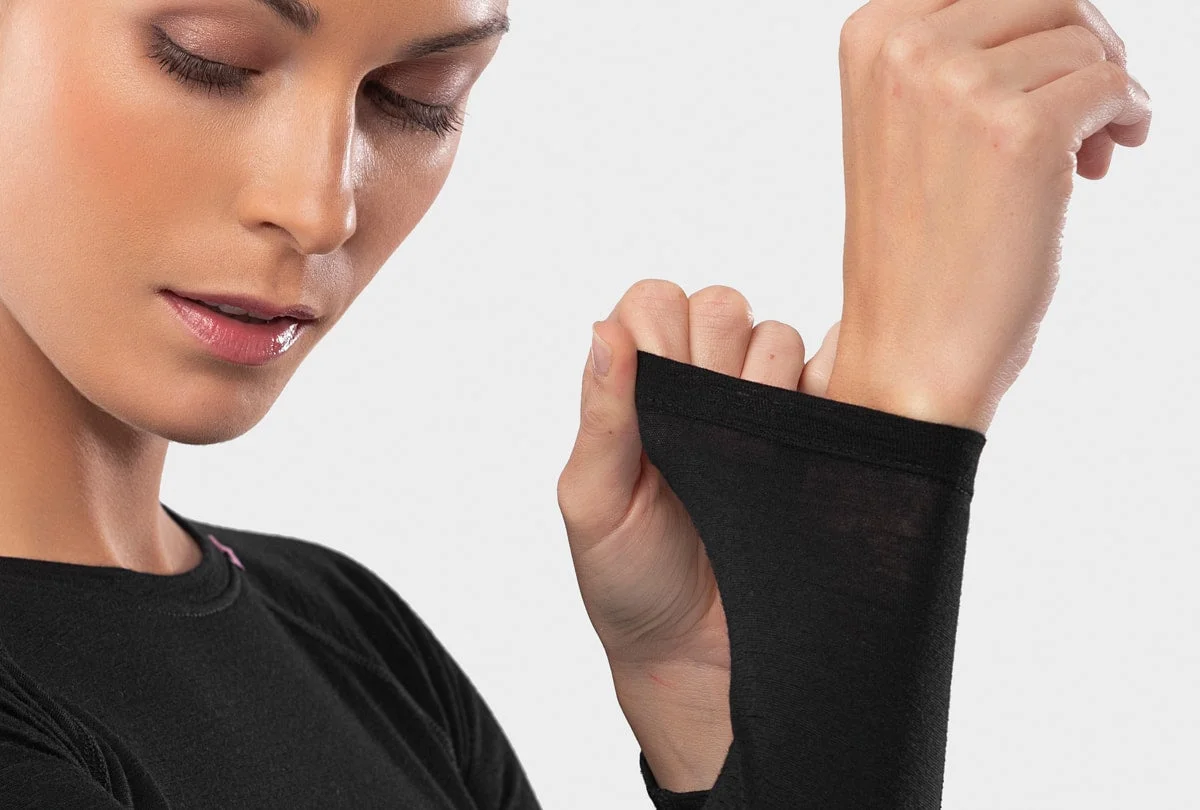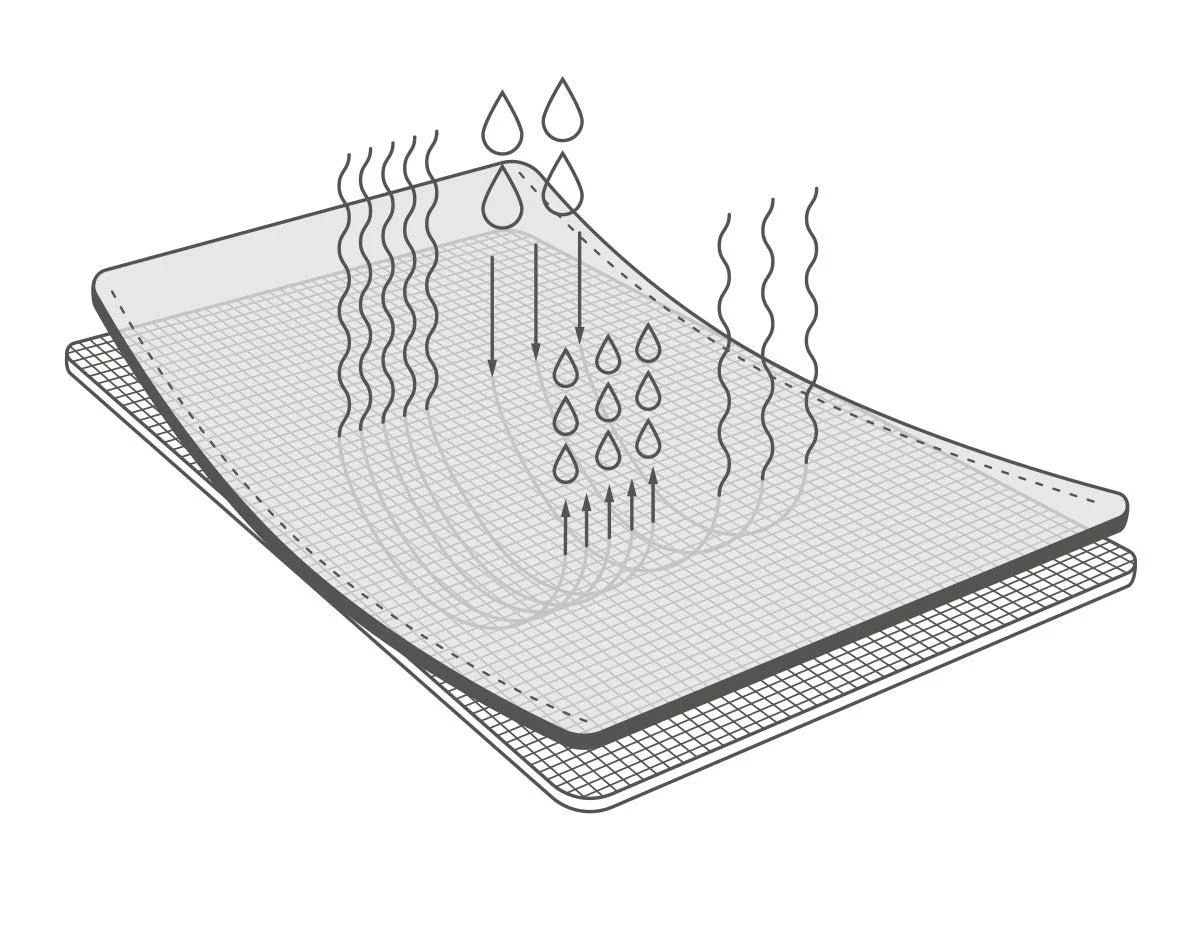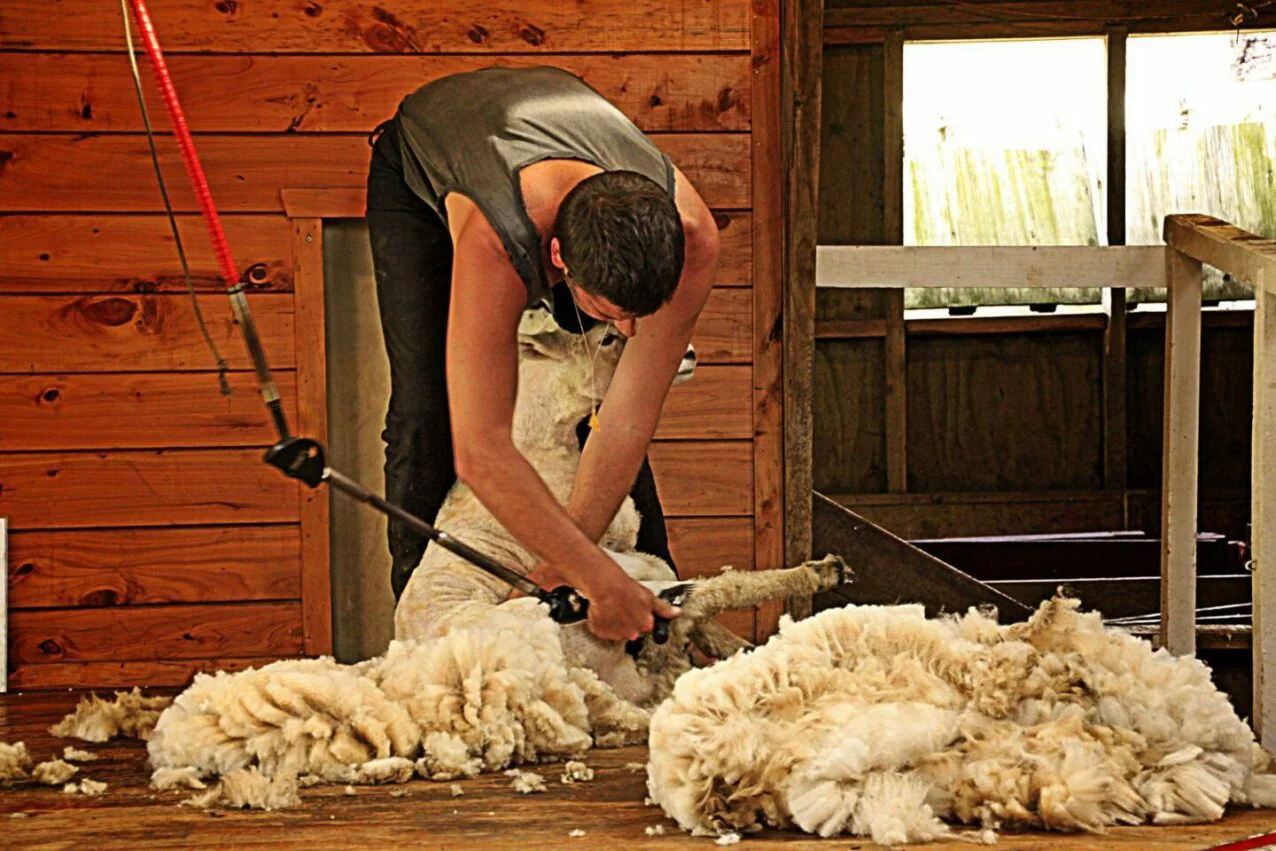If you’ve ever wondered why merino wool is used to make socks, jerseys, thermal base layers and other cycling apparel, here are 10 reasons why this natural fiber is an excellent alternative to synthetic fibers:
Thermoregulating properties
It keeps you warm when it’s cold and cool when it’s hot. The same thing it does for sheep when winter or summer comes.

Merino sheep wool fibers are very thin, curly and wavy, up to 40 crimps per cm. This creates air chambers that retain body heat and form an insulating barrier against cold temperatures outside. In addition, its high moisture absorption (up to one third of its own weight) works great in low temperatures, not only because it keeps the skin dry, but also because wool warms up as it absorbs moisture. This absorption heat is generated in an exothermic process in which wool and water molecules collide, releasing energy.
Wearing a merino wool garment in the summer may sound crazy, but wool itself does not emit heat. The same air chambers that insulate from the cold also insulate from the heat. But does our body generate heat when we ride a bike? Yes, it does. The cooling effect of merino wool is due to the following two properties:
Moisture absorption
Hygroscopy. And what does that mean? What about those little bags that say “silica gel” that come inside the packaging boxes? Well, silica gel is also hygroscopic, just like merino wool fibers. This means that the wool absorbs moisture from the body, stores it so that the skin remains dry and, being breathable, wicks it away outside. When it is hot outside, it dries quickly and the cooling effect is achieved because the body can keep sweating.
Breathability
Compared to synthetic fibers such as polyester, merino wool is 30 times more breathable. This happens because perspiration occurs within the merino wool fibers themselves, allowing air to flow naturally, whereas in synthetic fibers it depends on the size of the pores between the fibers.

Antimicrobial properties
Merino wool prevents bacterial growth in three ways:
- The flaky surface of the fiber prevents bacteria from clinging to it.
- Thanks to its excellent moisture absorption and breathability, it prevents sweat from accumulating on the skin.
- Merino wool is basically sheep’s hair and therefore it is composed mainly of a fibrillar protein known as keratin, which acts as a protective barrier against microorganisms, among other things.
Smell-resistant and water-repellent
Bacteria are responsible for bad odors. They love hot and humid environments. As we have just learned, merino wool prevents their proliferation and also absorbs moisture and is breathable, so it dries faster. Therefore, there is less bacteria and less unpleasant smell in the garments and on the skin.

The epicuticle is the outermost layer of the merino wool fiber, where fatty acids and proteins form outward-facing bonds, making the surface hydrophobic and water-repellent.
Resistant and durable
Merino wool is not perfect. It is not as strong as nylon, polyester or other synthetic fibers. These, on the other hand, provide less breathability, sweat absorption and odor-resistance than merino wool. None of them is perfect, so we will most commonly find different blends of the above fabrics in garments.
As far as durability is concerned, it depends on how we take care of our garments. However, given that clothing made of merino wool does not tend to smell bad and needs to be washed less often than clothing made of synthetic fibers, it will logically last longer.
Versatility
Thanks to its thermoregulating properties, it can be used at any time of the year, whether it is hot or cold.
The combination of merino wool with other fibers improves and enhances the properties of cycling clothing, making it more versatile and suitable for different temperature ranges.
Comfort
If you have ever tried on a thermal base layer, jersey, socks or jacket made of merino wool, you know that the soft and warm feeling of its extremely thin and light fibers on the skin is unbeatable.

Good for your skin
First of all, merino wool does not itch because it is so thin (between 17 and 23 microns) that it is far from the limit at which the human body begins to experience this unpleasant feeling (25 microns). If this were not the case, merino wool would not improve the quality of sleep compared to other fabrics such as cotton or polyester as this study concluded.
As far as allergies are concerned, this whole theory has a lot to do with low-quality wool, and the itching and skin irritation it causes. But “current evidence does not suggest that wool-fibre is a cutaneous allergen”. Quite the contrary, it seems that all the properties mentioned so far make it a natural treatment against eczema and reduce its symptoms.
In addition, it is worth mentioning that depending on the density of the merino wool fabric, it can offer UV protection up to 50 UPF.
Eco-friendly raw material
Let’s be honest, all textile production leaves a footprint on our planet, but some more than others. Synthetic fibers are made from petroleum polymers and account for 1.35% of the world’s consumption of this fossil fuel. Wool, on the other hand, is obtained from sheep that are sheared once a year, and then their fleece grows back, making wool a renewable material. If you are concerned about animal welfare, rest assured: the shearers are experts in the field and they do not cause any harm to the sheep.

We are not going to lie and tell you that wool does not pollute the environment because in the whole process, from the breeding of the sheep until the point when a package with a thermal base layer arrives at your home, a carbon footprint is being generated. The advantages of merino wool are that it is reusable and 100% biodegradable.
As it is antibacterial and odor-resistant, it does not need to be washed too often, which helps to save energy. But most importantly, it does not generate microplastics the way synthetic fibers do every time we wash them. Those tiny plastic particles are everywhere, even in the human placenta.

Finally, a very noteworthy fact: the production of merino wool keeps people in rural areas, preventing the depopulation and abandonment of villages and large stretches of land where, without the sheep grazing, the fields become full of fuel for wildfires. Looking at it from the cyclist’s point of view: In a certain way, merino wool cycling clothing helps to take care of nature and to keep the roads and trails clean so that we all can cycle across them.





Love to wear merino wool !!
Just wish siroko would make some summer jerseys out of merino as well !!
Hi Paulo,
Thanks for your comment. We are working on socks and long sleeve jersey. We hope to have them available as soon as possible, so stay tuned if you are interested in these items.
Best regards
Pingback: Why wear merino wool base layers? - Rainbow Frog | Rainbow Frog